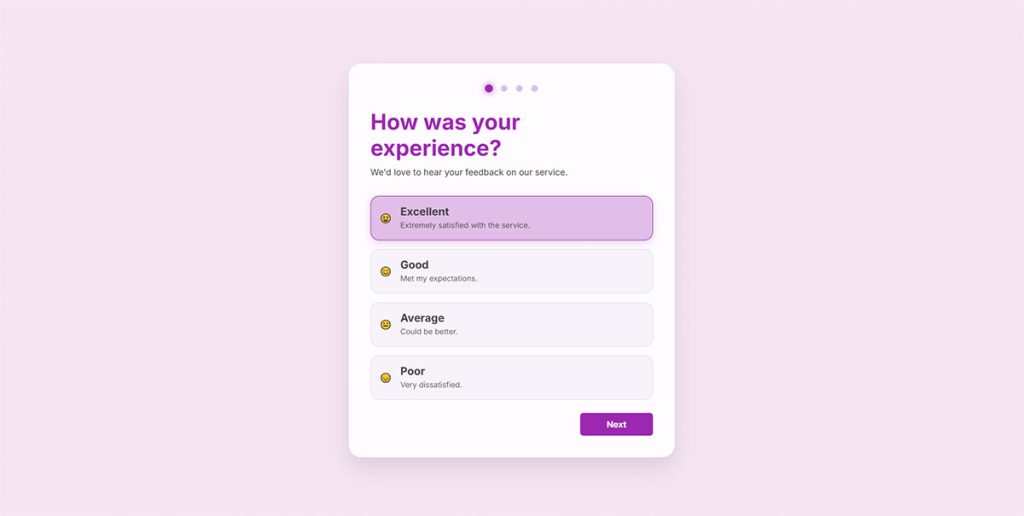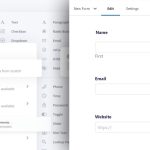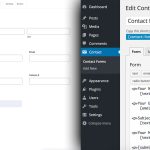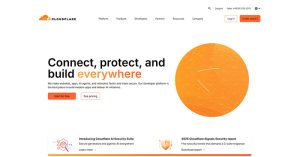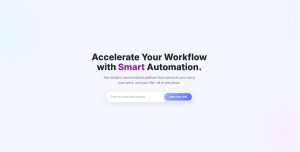Your sales team can’t close deals without qualified prospects in the pipeline. That’s the reality every B2B company faces. Lead generation for B2B companies determines whether your business grows predictably…
Table of Contents
Long forms kill conversions faster than slow loading pages. Multi-step form templates break complex data collection into digestible chunks, transforming overwhelming questionnaires into engaging user experiences that actually get completed.
Modern websites need sophisticated data gathering without frustrating visitors. Whether you’re building lead generation workflows, customer onboarding sequences, or detailed survey forms, the right template architecture makes the difference between abandoned forms and successful conversions.
Smart businesses use progressive disclosure and conditional logic to guide users through structured input sequences. This approach increases completion rates while capturing higher-quality information from prospects and customers.
You’ll discover proven form design patterns that boost engagement, reduce abandonment, and streamline your data collection process. We’ll explore wizard-style navigation, mobile-responsive layouts, and conversion optimization techniques that turn complex forms into powerful business tools.
From simple contact forms to comprehensive registration workflows, these templates provide the foundation for building forms that users actually want to complete.
Multi-Step Form Templates
Multi-Step Registration Form
See the Pen
Multi-Step Registration Form by Bogdan Sandu (@bogdansandu)
on CodePen.
A sleek, contemporary registration form featuring a beautiful gradient background and glass-morphism design. Built with vanilla HTML, CSS, and JavaScript – no frameworks required!
Multi-Step Onboarding Form
See the Pen
A modern multi-step onboarding form by Bogdan Sandu (@bogdansandu)
on CodePen.
A modern multi-step onboarding form built with HTML, CSS, and JavaScript.
Multi-Step Checkout Form
See the Pen
Modern Multi-Step Checkout by Bogdan Sandu (@bogdansandu)
on CodePen.
A modern and responsive multi-step checkout form designed with a clean aesthetic. Built with HTML, Bootstrap 5 for layout, and custom CSS for a unique, award-winning look, this form guides the user through the process with smooth micro-interactions and animations. Key features include a dynamic progress bar, a two-panel layout on desktop for a live order summary, and a custom JavaScript notification system. The design is fully mobile-friendly, providing a seamless experience across all devices.
Multi-Step Survey Form
See the Pen
Multi-Step Survey Form by Bogdan Sandu (@bogdansandu)
on CodePen.
A clean and modern multi-step survey form built with HTML, CSS, and JavaScript. This form features a unique and refreshing color palette, smooth fade-in animations for each step, and subtle micro-interactions like hover effects on buttons and checkboxes to enhance the user experience. It’s fully responsive, using Bootstrap for a solid and adaptable layout.
Multi-Step Feedback Form
See the Pen
Multi-Step Feedback Form by Bogdan Sandu (@bogdansandu)
on CodePen.
A sleek, modern, and fully responsive multi-step feedback form designed for a seamless user experience. This project showcases a contemporary design language with subtle animations and micro-interactions.
Multi-Step Application Form
See the Pen
Multi-Step Application Form by Bogdan Sandu (@bogdansandu)
on CodePen.
A clean and modern multi-step application form designed with a polished, professional aesthetic. This form guides users through the submission process with a sleek progress bar and intuitive micro-interactions.
Multi-Step Booking Form
See the Pen
Multi-Step Booking Form by Bogdan Sandu (@bogdansandu)
on CodePen.
A professional, multi-step booking form built with a clean and modern design. This responsive component features a two-column layout on desktop, a refined blue and gray color palette, and subtle micro-interactions to create a polished user experience. The form is structured with HTML, styled with custom CSS, and uses Bootstrap for a solid, responsive foundation.
Modern Multi-Step Job Application Form
See the Pen
Modern Multi-Step Job Application Form by Bogdan Sandu (@bogdansandu)
on CodePen.
A sleek, responsive multi-step job application form built with HTML, CSS, and JavaScript, using Bootstrap 5. Features a modern UI with smooth transitions, interactive skill tags, file upload, and real-time validation.
Multi-Step Cardiology Intake Form
See the Pen
Modern Multi-Step Cardiology Intake Form by Bogdan Sandu (@bogdansandu)
on CodePen.
A sleek and professional cardiology patient intake form with a multi-step interface and smooth transitions. Built with vanilla HTML, CSS, and JavaScript – no frameworks required!
Multi-Step Job Application Form
See the Pen
Modern Multi-Step Job Application Form by Bogdan Sandu (@bogdansandu)
on CodePen.
A sleek and interactive multi-step form designed for job applications. Built with vanilla HTML, CSS, and JavaScript. No external libraries or dependencies required. Perfect for job application portals, onboarding processes, or any multi-step data collection needs.
Logo Designer Client Onboarding Form
See the Pen
Modern Logo Designer Client Onboarding Form by Bogdan Sandu (@bogdansandu)
on CodePen.
A sleek and professional multi-step onboarding form designed specifically for logo designers. Built with vanilla JavaScript and enhanced with GSAP animations, this form provides an intuitive way to collect client information and design preferences.
Multi-Step Survey Form
See the Pen
Modern Multi-Step Survey Form by Bogdan Sandu (@bogdansandu)
on CodePen.
A sleek and responsive multi-step survey form built with pure HTML, CSS, and JavaScript. This form features a modern design with smooth transitions, form validation, and an interactive progress bar.
Multi-Step Quiz Form
See the Pen
Modern Multi-Step Quiz Form by Bogdan Sandu (@bogdansandu)
on CodePen.
A sleek and interactive quiz form featuring a pastel color scheme and smooth transitions. Built with vanilla HTML, CSS, and JavaScript.
Multi-Step Profile Form
See the Pen
Modern Multi-Step Profile Form by Bogdan Sandu (@bogdansandu)
on CodePen.
A sleek and interactive multi-step profile creation form built with HTML, CSS, and vanilla JavaScript. Features a modern teal color scheme and smooth transitions between steps.
Multi-Step Course Enrollment Form
See the Pen
Modern Multi-Step Course Enrollment Form by Bogdan Sandu (@bogdansandu)
on CodePen.
A sleek and intuitive multi-step enrollment form built with HTML, CSS, and vanilla JavaScript. Features a modern design with a clean indigo color scheme and smooth transitions between steps.
Multi-Step Event Registration Form
See the Pen
Modern Multi-Step Event Registration Form by Bogdan Sandu (@bogdansandu)
on CodePen.
A sleek and responsive event registration form with a pastel color scheme, featuring a three-step registration process. Built with vanilla HTML, CSS, and JavaScript – no frameworks or libraries required.
FAQ on Multi-Step Form Templates
What are multi-step forms and how do they work?
Multi-step forms break long questionnaires into smaller, sequential sections. Users complete one page at a time, with progress indicators showing advancement through the process.
This wizard-style navigation reduces cognitive load and increases completion rates compared to traditional single-page forms.
Why should I use multi-step form templates instead of single-page forms?
Sequential form design improves user experience by preventing form abandonment. Studies show multi-step approaches can boost conversion rates by up to 300%.
Breaking complex data collection into manageable chunks makes users more likely to complete the entire process.
How many steps should my multi-step form have?
Most effective forms contain 3-5 steps maximum. Each step should focus on one specific topic or data category.
Too many steps create fatigue, while too few don’t provide the psychological benefits of progressive disclosure.
Do multi-step forms work well on mobile devices?
Mobile-responsive multi-step templates actually perform better than single-page alternatives on smartphones. Smaller screens benefit from focused, step-by-step input.
Touch-friendly navigation and optimized field layouts improve mobile form completion significantly.
Can I add conditional logic to multi-step form templates?
Yes, conditional logic allows forms to show relevant fields based on previous answers. This creates personalized experiences and reduces unnecessary questions.
Smart branching keeps forms concise while gathering comprehensive data from different user segments.
How do I track form analytics across multiple steps?
Form analytics should monitor completion rates at each step, identifying where users typically abandon the process. Track time spent per section and overall conversion metrics.
Most form builders provide detailed analytics dashboards for multi-step workflows.
What’s the best way to validate data in multi-step forms?
Implement real-time form validation at each step completion. This prevents users from advancing with errors and reduces frustration.
Validate required fields, email formats, and data consistency before allowing progression to subsequent steps.
Should I save user progress automatically in multi-step forms?
Auto-save functionality prevents data loss if users close their browser or experience connection issues. Store partial submissions in temporary storage.
This feature significantly reduces abandonment rates and improves user confidence in longer forms.
How can I optimize multi-step forms for better conversions?
Focus on clear progress indicators, compelling step titles, and minimal required fields per section. Use conversion rate optimization techniques like social proof and urgency.
Test different step sequences and field arrangements to find optimal configurations for your audience.
What are common mistakes to avoid with multi-step form templates?
Avoid asking for sensitive information too early, creating unnecessarily long sequences, or lacking clear progress indicators. Don’t skip mobile optimization.
Poor form UX design and confusing navigation patterns destroy the benefits of stepped workflows.
Conclusion
Multi-step form templates transform how businesses collect customer data by creating engaging, user-friendly experiences that drive higher completion rates. These structured workflows replace overwhelming single-page forms with intuitive, step-by-step processes.
Smart implementation of wizard-style navigation and progressive web forms addresses modern user expectations. Visitors prefer guided data entry over lengthy questionnaires that feel like digital paperwork.
The key lies in balancing comprehensive information gathering with seamless user journeys. Form builders like Typeform, JotForm, and Gravity Forms provide drag-and-drop interfaces that make creating sophisticated multi-step workflows accessible to non-technical users.
Mobile optimization remains critical as smartphone traffic dominates. Responsive design ensures your stepped registration processes work flawlessly across all devices and screen sizes.
Start with simple three-step templates focusing on lead qualification, then expand complexity based on your specific business needs. Test different configurations to find the optimal balance between data collection depth and user experience quality for your audience.
